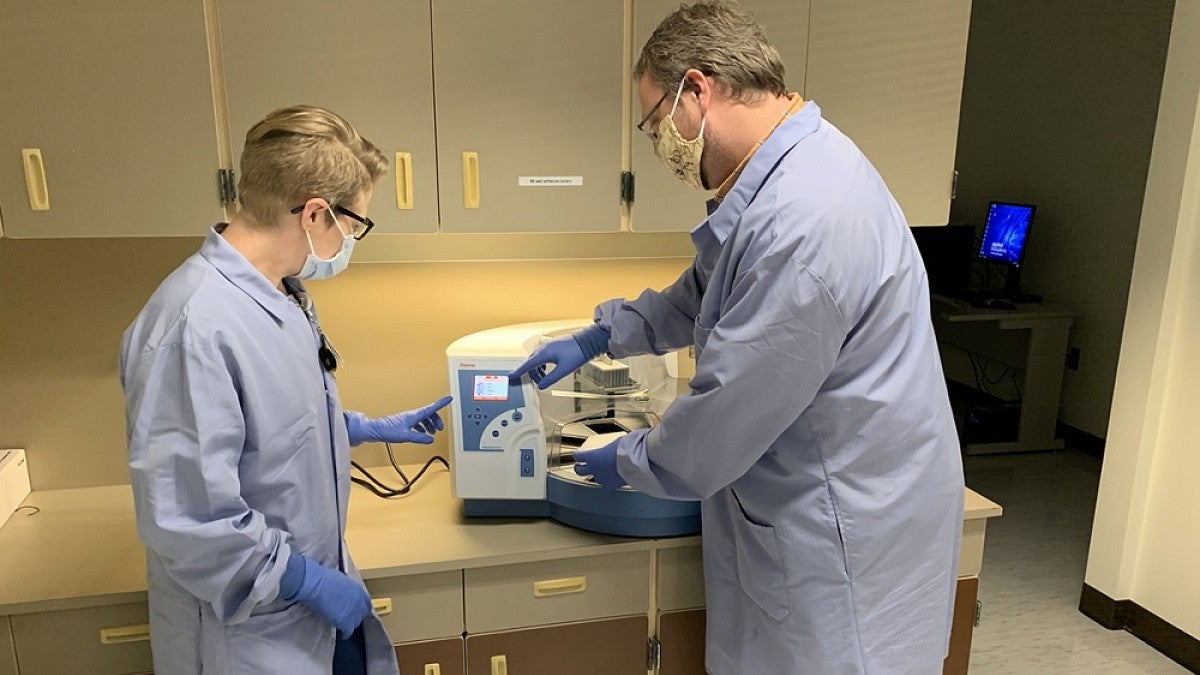McKenzie-Willamette Medical Center took delivery this week of a new high-tech instrument provided by the University of Oregon, doubling the hospital’s capacity to test patients for the coronavirus that causes COVID-19.
Part of a collaboration between the UO and the medical center announced in April, the new equipment expands the capabilities of a high-speed lab that has processed close to 2,000 patient specimens since April 20. The capacity to accurately test a high volume of patients is key to Lane County’s continued phased reopening.
“The health of our community during the reopening phases is a top priority to McKenzie-Willamette Medical Center,” said Adam Loris, the center’s assistant chief executive officer. “Our collaboration with University of Oregon has allowed us to expand testing capacity to over 400 test per day in an effort to meet this need.”
Known as the KingFisher, the instrument automates the extraction of RNA, the genetic material that allows technicians to determine whether a sample contains genetic sequences specific to the COVID-19 coronavirus.
“The UO understood early on that testing would be vital to slowing the spread of the coronavirus,” said Greg Shabram, chief procurement officer for the university. “We ordered this machine in March because of its ability to process a high volume of tests quickly. It’s the only one in our area and we are hopeful its capacity can also cover regional needs beyond Lane County’s borders.”
Along with the new instrument, the UO has provided a testing machine and an array of instruments, scientific equipment and expertise from genomics researchers. Researchers from the UO’s Genomics and Cell Characterization Core Facility, which supports scientific research by offering genetic and genomic technologies, have been collaborating with McKenzie-Willamette on the project.
McKenzie-Willamette is a 113-bed health care facility in Springfield with a Level III trauma center offering a full range of inpatient, outpatient, diagnostic, medical, surgical and emergency care services.
For a complete list of all measures being taken, see the university’s coronavirus information page.


